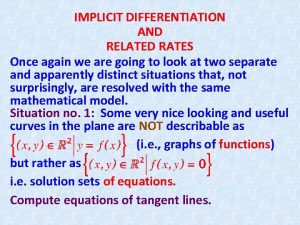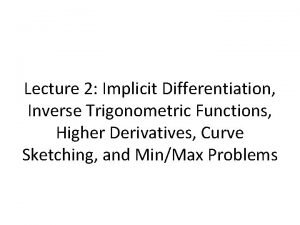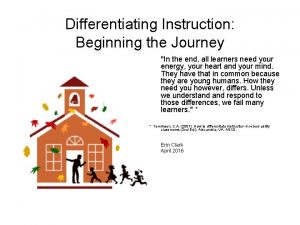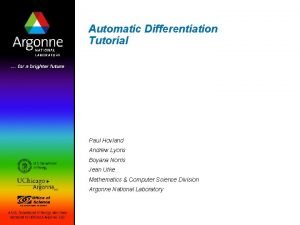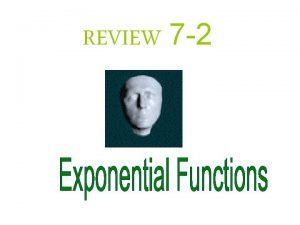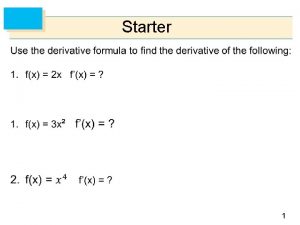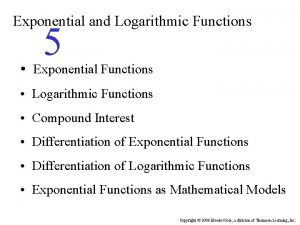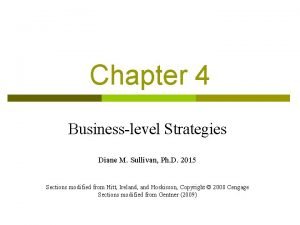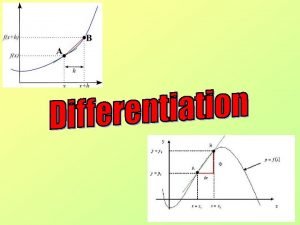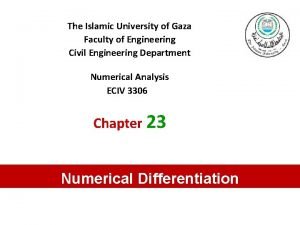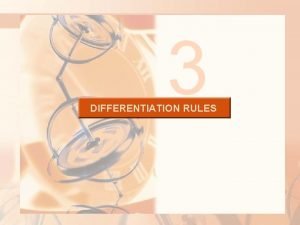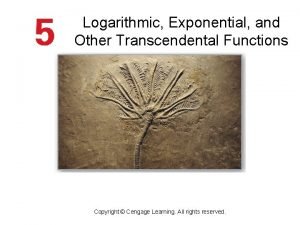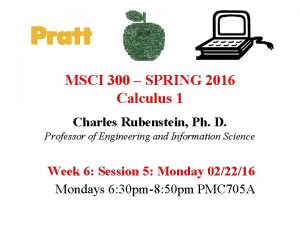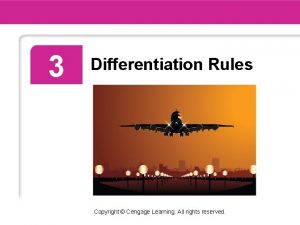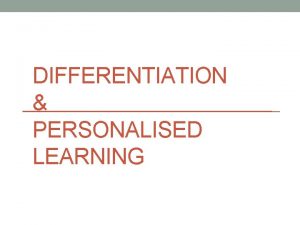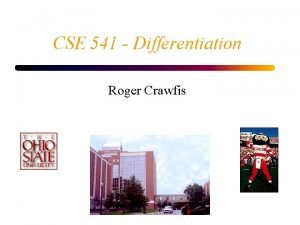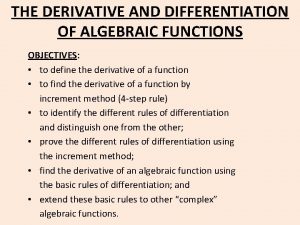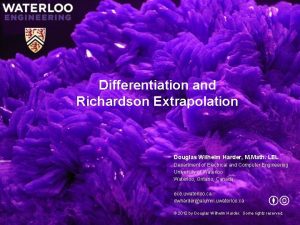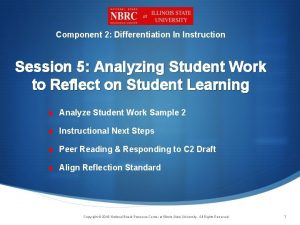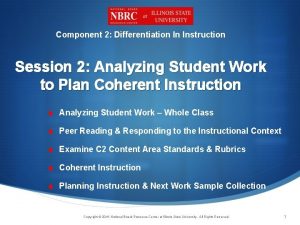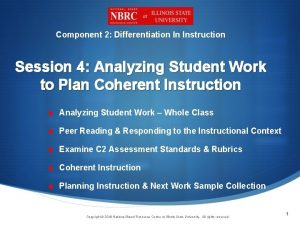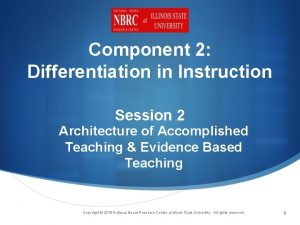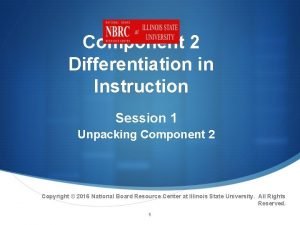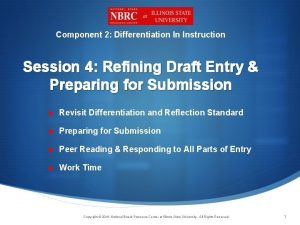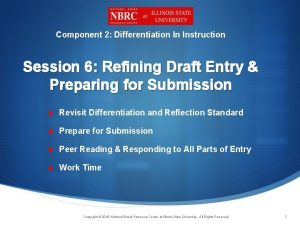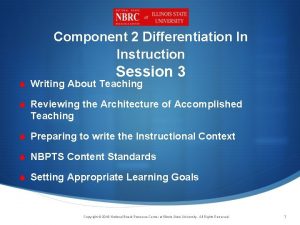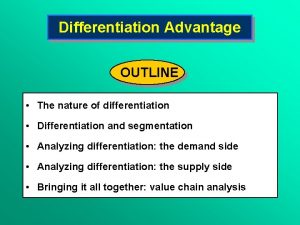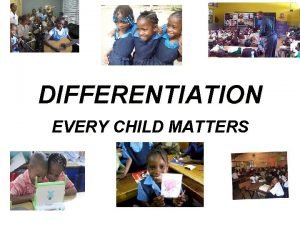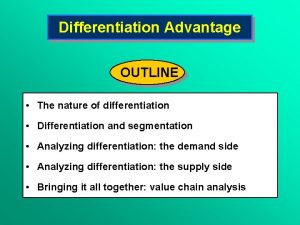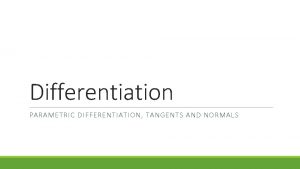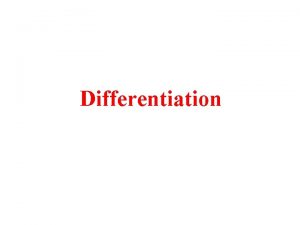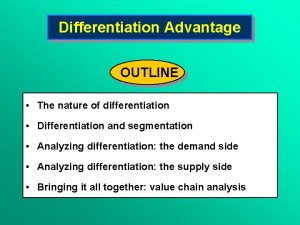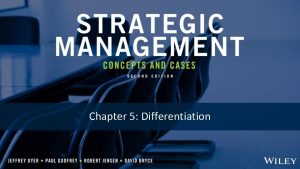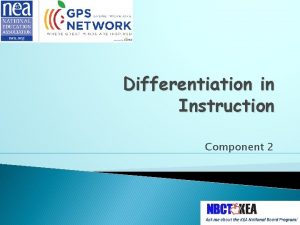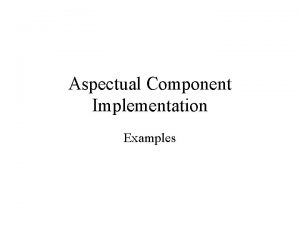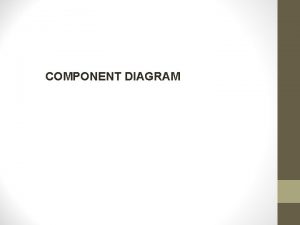Component 2 Differentiation In Instruction Session 3 Analyzing


























- Slides: 26

Component 2: Differentiation In Instruction Session 3: Analyzing Student Work to Plan Coherent Instruction Sample 2 S Analyzing Student Work Sample 2 S Instructional Next Steps S Peer Reading & Responding to C 2 Draft S Aligning Reflection Standard Copyright © 2016 National Board Resource Center at Illinois State University. All Rights Reserved. 1

Welcome v Be sure to sign in. v Please log on to your National Board Profile to monitor your current status. v Respond to one of the following: o What new information about your students did you see as a result of Student Work Sample 1 analysis? o How did this information influence differentiation in your instruction? Copyright © 2016 National Board Resource Center at Illinois State University. All Rights Reserved. 2

Outcomes ² Analyze the demands of a second student work assignment & student responses to the assignment ² Use information from Student Work Sample 2 to plan coherent instruction ² Examine draft Written Commentary for evidence aligned to Level 4 Rubric, Standards and evidence by a peer. ² Examine the Reflection Standard in relation analysis of Student Work Sample Activity 4 and Written Commentary questions. Copyright © 2016 National Board Resource Center at Illinois State University. All Rights Reserved. 3

Session 3: Analyzing Student Work to Reflect on Learning Topic 1: Analyzing Student Work • The purpose of collecting student data is to analyze student learning patterns, draw conclusions about a student’s knowledge, skills or other attributes, provide feedback to individuals & groups of students and guide the future of learning. • Evidence based teaching is a way of structuring classroom planning and instruction where teacher continually collect, interpret and use evidence of student learning to make decisions that guide further instruction. Copyright © 2016 National Board Resource Center at Illinois State University. All Rights Reserved. 4

Copyright © 2016 National Board Resource Center at Illinois State University. All Rights Reserved. 5

Analyze the Assignment-1 A Copyright © 2016 National Board Resource Center at Illinois State University. All Rights Reserved. 6

Analysis of Student Responses-1 B 7 Copyright © 2016 National Board Resource Center at Illinois State University. All Rights Reserved.

Respond with your partner § Were you able to clearly describe the performance levels for each targeted student? § Was your criteria for assessing student clear? Why or why not? How might you adjust the criteria to elicit more specific information? § What specific skills and knowledge did your students learn? How do you know? § What do you notice about the skills and knowledge of each student? § Are there other prerequisite skills that need to be considered for this lesson series? If so, describe them specifically. Copyright © 2016 National Board Resource Center at Illinois State University. All Rights Reserved. 8

Activity 2 Copyright © 2016 National Board Resource Center at Illinois State University. All Rights Reserved. 9

Using the AAT when a member of a cohort or PLC: 4 a, 4 d, 4 e, 4 f Enhanced Architecture of Accomplished Teaching START HERE: • ASSESSMENT OF STUDENTS • Who are they? • Where are they now? • What do they need and when do they need it? Domain 1 – Planning & Preparation 1 b – Knowledge of students 1 f – Designing Student Assessment Reflect on student learning, the effectiveness of instructional design, particular concerns and issues. • Where should I begin? Domain 1 – Planning & Preparation 1 a, 1 b, 1 c, 1 d, 1 e Set high, worthwhile goals appropriate for these students, at this time, in this setting Implement instruction designed to attain these goals. Set new high and worthwhile goals that are appropriate for these students at this time. Provide timely, meaningful feedback to students about their level of accomplishment of the targeted goals. Domain 1 – Planning & Preparation 1 a, 1 b, 1 c, 1 d, 1 e Domain 4 4 a Reflecting on Teaching Domain 3 – Instruction 3 a, 3 b, 3 c, 3 d, 3 e Evaluate student learning in light of the goals and the instruction. Domain 1 – Planning & Preparation- 1 d Domain 3 – Instruction – 3 d Copyright © 2016 National Board Resource Center at Illinois State University. All Rights Reserved. 10

Activity 3 11 Copyright © 2016 National Board Resource Center at Illinois State University. All Rights Reserved.

Activity 4 12 Copyright © 2016 National Board Resource Center at Illinois State University. All Rights Reserved.

Session 3: Analyzing Student Work to Reflect on Learning Topic 2: Instructional Next Steps • Use information from Student Sample 2 analysis to plan coherent instruction • To be effective instruction must be coherent-that is all of the elements of instruction must relate to one another logically and purposefully. • Instructional elements of Coherent instruction are: • Learning goals • Learning Activities and Assessments • Instructional Materials and Resources Copyright © 2016 National Board Resource Center at Illinois State University. All Rights Reserved. 13

distudentsassessmentmodificationsf 09 edis 411. wikispaces. com Reflect: How do you adjust your teaching given what you know about your • Students? • Content Area? 14 Copyright © 2016 National Board Resource Center at Illinois State University. All Rights Reserved.

Reflect: Tomlinson 2013 ascd. org How do you adjust your teaching given what you know about your • Students ? • Content Area? Copyright © 2016 National Board Resource Center at Illinois State University. All Rights Reserved. 15

Copyright © 2016 National Board Resource Center at Illinois State University. All Rights Reserved. 16

First, Focus on the Students Where are my students intellectually, socially & emotionally? What can my students do at this time in relation to the content addressed by this component? Clarify the student background knowledge that helps them to be prepared for this content. 17 Copyright © 2016 National Board Resource Center at Illinois State University. All Rights Reserved.

Next, consider how the standards are unpacked to connect with student skills & abilities in this content area How do my students learn best in relation to the content for this component? What is the ability range of the class in relation to the content addressed in this component? What are my students’ interests that impact my planning for the content addressed in this component? What is a realistic, measurable learning goal for my students at this point in time? Copyright © 2016 National Board Resource Center at Illinois State University. All Rights Reserved. 18

Align Targets, Goals, Assessments & Instruction Gain a clear vision of the target Write learning goals that tell what students should be able to do as a result of this lesson or lesson series Determine how students will show what they know & can do Determine how to help students reach the target “Unpack” the Standards Write goals that describe the level of rigor students demonstrate Develop the Assessme nt Plan the instructio n Alignment Copyright © 2016 National Board Resource Center at Illinois State University. All Rights Reserved. 19

Session 3: Analyzing Student Work to Reflect on Learning Topic 3: Peer Reading & Responding to Draft Written Commentary • Feedback on evidence assists in refinement of draft entries. • Aligning Level 4 Rubric with certificate Standards deepens understanding. • Role of Peer Reader is to read for aligned evidence to the descriptions given. • Individual Candidates must decide for themselves how to respond to feedback given. Copyright © 2016 National Board Resource Center at Illinois State University. All Rights Reserved. 20

21 Copyright © 2016 National Board Resource Center at Illinois State University. All Rights Reserved.

Session 3: Analyzing Student Work to Reflect on Learning Topic 4: Aligning Reflection Standard • An Accomplished Teacher is a Reflective Teacher. • Spending time aligning these documents with certificate Reflection Standard promotes deeper understanding of the standard through “ah ha” moments. Copyright © 2016 National Board Resource Center at Illinois State University. All Rights Reserved. 22

23 Copyright © 2016 National Board Resource Center at Illinois State University. All Rights Reserved.

• Cohort members reflect on the session together • Any cohort member can take notes for the group • Teacher Liaison uses this form to share what’s happening in the cohort with the administrator Copyright © 2016 National Board Resource Center at Illinois State University. All Rights Reserved. 24

Be Sure to Reflect on: • Students • Teaching Strategies Copyright © 2016 National Board Resource Center at Illinois State University. All Rights Reserved. 25

Questions? Copyright © 2016 National Board Resource Center at Illinois State University. All Rights Reserved. 26
 Site:slidetodoc.com
Site:slidetodoc.com Individualized instruction vs differentiated instruction
Individualized instruction vs differentiated instruction Implicit differentiation and related rates
Implicit differentiation and related rates Implicit differentiation with inverse trig functions
Implicit differentiation with inverse trig functions Science differentiation in action
Science differentiation in action Scaffolding vs differentiation
Scaffolding vs differentiation Automatic differentiation tutorial
Automatic differentiation tutorial Ln and e
Ln and e Differentiation basic formulas
Differentiation basic formulas Derivative of exponential
Derivative of exponential Positioning involves meeting consumers lower performance
Positioning involves meeting consumers lower performance Diane m sullivan
Diane m sullivan How to.differentiate
How to.differentiate High accuracy differentiation formulas
High accuracy differentiation formulas Sinh inverse x formula
Sinh inverse x formula 5 generic business strategies
5 generic business strategies Transcendental functions
Transcendental functions Reciprocal rule calculus
Reciprocal rule calculus Niche differentiation capsim
Niche differentiation capsim Differentiation of cosh2y
Differentiation of cosh2y Ncca differentiation
Ncca differentiation Differentiation of sin inverse
Differentiation of sin inverse Differentiation
Differentiation Roger crawfis
Roger crawfis Differentiation
Differentiation Total differentiation
Total differentiation Richardson extrapolation for differentiation example
Richardson extrapolation for differentiation example


